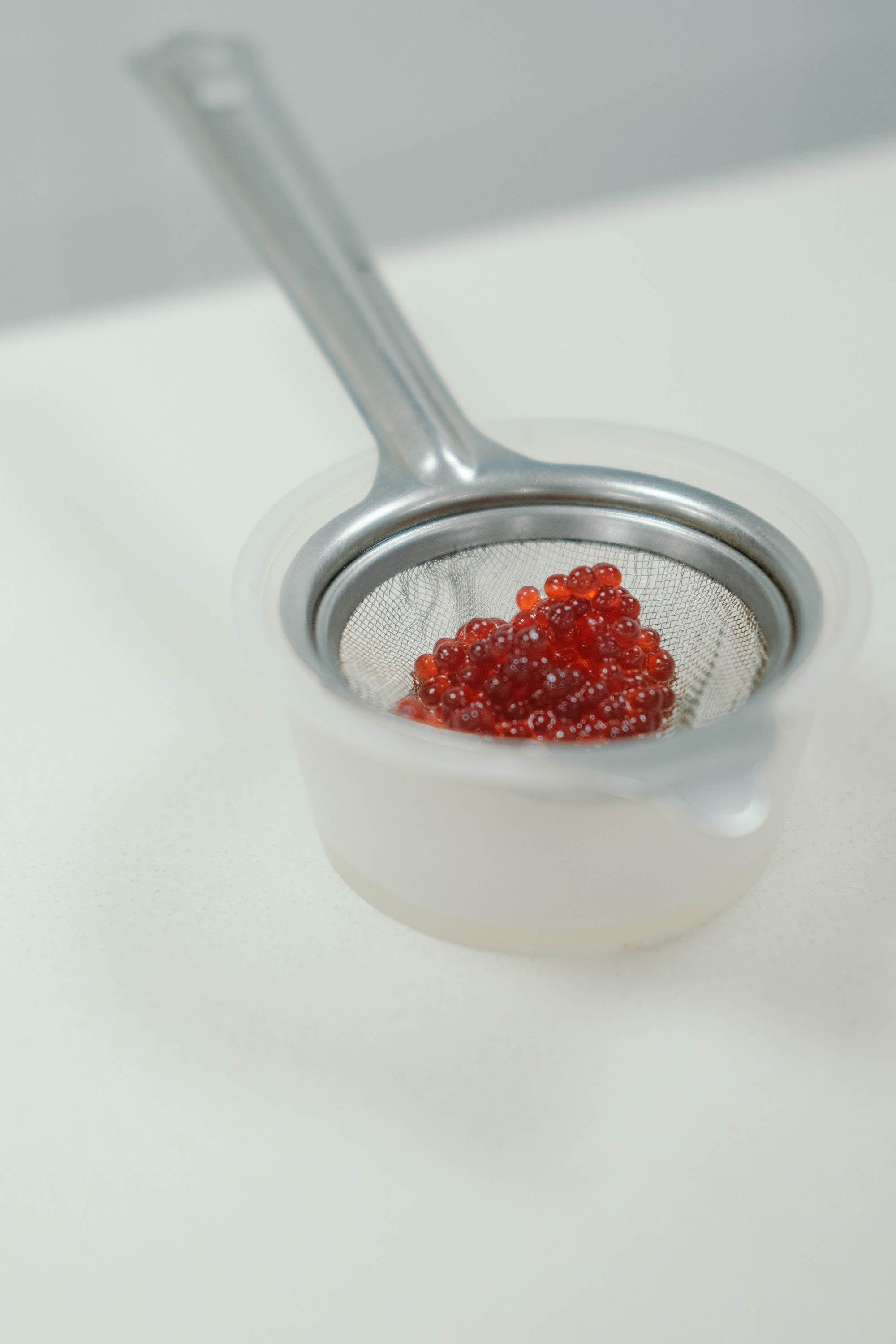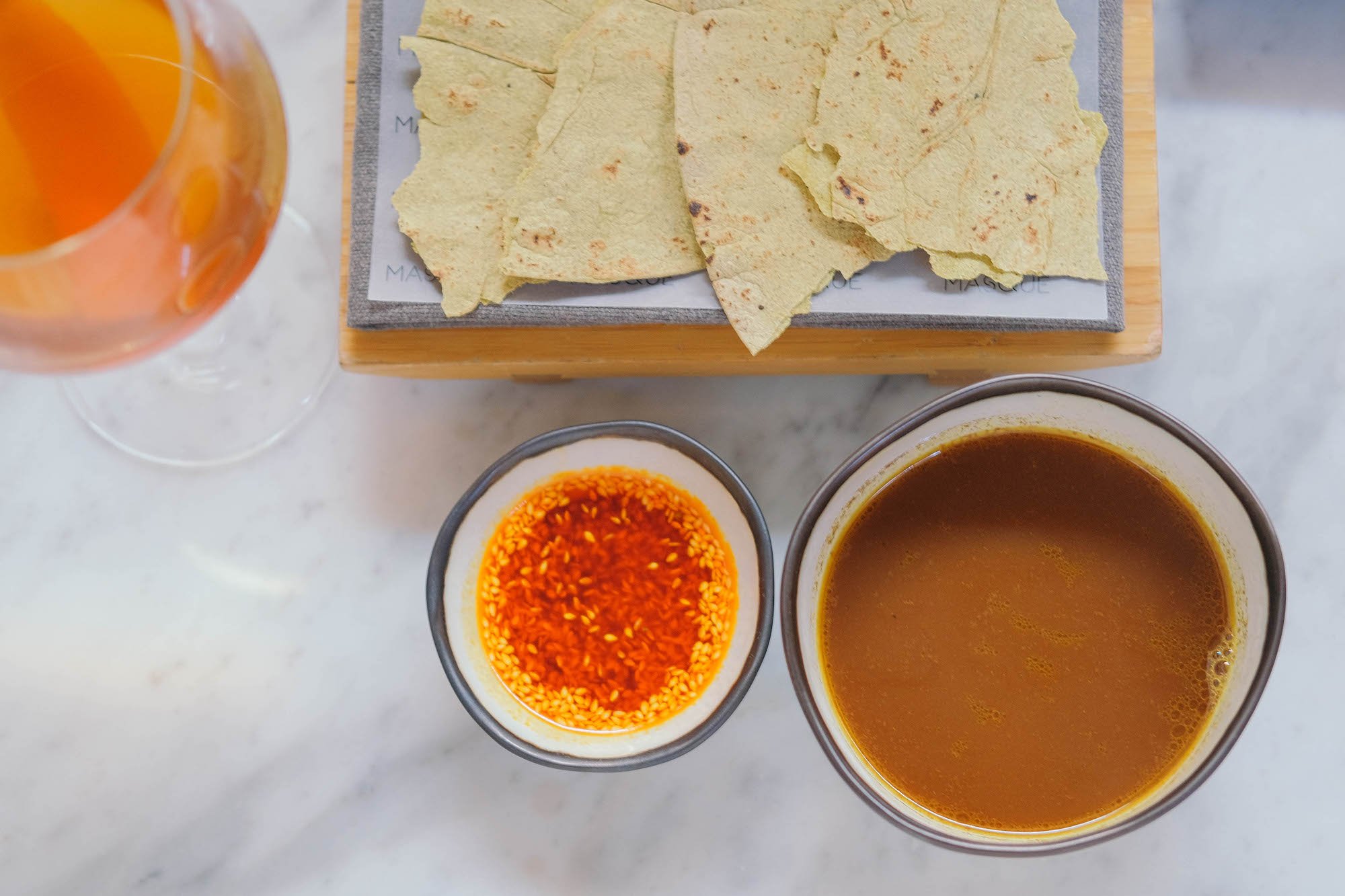A Glorious Taste of Maharashtrian Cuisine with Saee Koranne-Khandekar

The second in a collaboration between Masque Lab and Goya, we present Saee Koranne-Khandekar, author and culinary consultant, who will be cooking an experimental interpretation of Maharashtrian cuisine over 7 courses.
#MASQUELABXGOYA is a series where we bring home chefs from around India to showcase their work and culinary heritage within the dialogue of food and culture. Saee Koranne-Khandekar will be cooking at Masque Lab on March 2nd and 3rd. You can book the experience through the links below.
“I've tried to push the definitions of how we perceive the cuisine(s) of Maharashtra a bit – to take it beyond the traditional banana leaf format, beyond the seriousness of a wedding feast or a naivedya platter, and really focus on what comprises the experience – the produce, the skill and knowledge of using produce in a certain way, at a certain time of year.”
Saee Koranne-Khandekar comes from a long line of women who have juggled multiple roles while always keeping food at the heart of things. Matriarch Anandi Gore served as corporator of her district, while also managing to meticulously record family history and compose ovis for her grandchildren. The women after her continued this tradition: to document, preserve, and celebrate. Saee herself is the author of 4 books – the Gore Family Cookbook, Pangat, a book that is the definitive tome on Maharashtrian cuisine, Crumbs, and From My Oven, a guide for the home baker – while also managing a day job as culinary consultant with some of the city’s most beloved eateries.
Gavhlyachi Kheer Creme Brulee ft hand-rolled pasta in reduced milk and saffron
Aale Limboo Gimlet, with ginger, lime, cardamom and gin
Kokum caviar garnish
Highlighting Maharashtrian food
She has spent much of her personal and professional life focussed on creating templates to make flavours and culinary techniques accessible through her research, books and her Instagram account, sharing video instructionals that have earned their own cult following. She laughs, acknowledging that she may be the only person to have maxed out their Instagram highlights – one hundred recipes!
Saee is taking over Masque Lab for a 2-day pop-up in March, as part of the on-going #MasqueLabXGoya collaboration, showcasing an experimental interpretation of Maharashtrian cuisine. “The format is in keeping with a Masque tasting menu, but the ingredients and cooking techniques are absolutely true to tradition.” There will also be cocktails! We stop by for tasting, and sample the Gimlet: a tribute to her father, with whom she shared her first taste of alcohol, a rite of passage at 18. “He loved the Gimlet, and this is a Marathi twist on the classic cocktail.” Cold, crisp, with a delicious heat from the addition of ginger.
Maharashtrian food has never made it into mainstream representations of Indian cuisine the way Kerala or Punjabi food has. Saee believes this is, in part, because the cuisine(s) of Maharashtra have suffered greatly from stereotyping. Existing Maharashtrian restaurants fall into two categories – canteen-style or snack-house style foods. “There is, most certainly, a gap – the more I speak with people, the more I realise how little people know about the vast topography and therefore, the related variety in the cuisines of the state. Commercial food establishments only offer terrible interpretations of Thalipeeth and make no attempt to work on a more inclusive menu with a view to educate their audience.”
Through her books and pop-ups, Saee hopes to restart the conversation (and curiosity) around her mother cuisine. “Even when we entertain at home, the vast majority of us hardly ever think of the rarer dishes from regional repertoire, and so, many ingredients and cooking techniques are slipping out of our collective food memories.”
#MasqueLabXGoya ft Saee
Masque, named India’s best restaurant, ranking no. 21 on Asia’s 50 Best Restaurants, 2022., describes itself as ingredient-driven, borrowing from the past to build modern Indian cuisine. “We travel around the country to understand ingredients, cuisines and cultures, through home cooks and tribal cooks, sometimes even professional cooks who cook these very niche cuisines. That is where we find inspiration for our menus at Masque.” Varun Totlani, head chef at Masque, sees the #MasqueLabXGoya series as a way to give diners a chance to sample from the source.
He underscores that regional food, cooked in homes and on the streets, in forests and villages, informed by diverse landscapes and techniques, inspires much of what happens in the space of fine dining. “Our work in the restaurant space is not to show how ingredients are used – that knowledge resides with the locals who cook it as part of their diet; we learn from them. In the last hour of cooking with Saee, I’ve already seen hand rolled pasta from Maharashtrian cuisine, aged Kakavi…” he trails off. Saee, who has more culinary experience than a home chef, is leaning into the idea of presenting her cuisine through a modernist lens. “I do think that there is some merit in taking regional cuisine into the realm of fine dining because whether ones likes it or not, one cannot deny the aspirational value of fine dining. Perhaps we need a little fine dining to show us how beautiful our own cuisines are!”
“Our job is to be playful,” Varun says of experiential restaurant spaces like Masque Lab. “To use ingredients unexpectedly. What can we do differently; how can we surprise you? For example, seabuckthorn juice is typically used as a palate cleanser or sorbet, given its tart profile. At Masque, can we use that to make pan puri or ceviche?”
Methi Borachi Bhaaji ft fenugreek and foraged jujubes
Orange Kharvas, steamed colostrum pudding infused with orange zest and edible gum crumb
Kaakvi hot toddy ft. Kolhapur sugarcane molasses; Kulith Saar with Bhurka, a warm horsegram broth with Marathwada-style chilli-sesame oil
Her upcoming dinner is a sort of road trip through the state – and through time. Gavhlyachi Kheer (a sort of traditional handmade pasta) is reimagined as creme brulee; a Cavatelli made entirely using upvaas-friendly ingredients; Khandeshi lamb curry, Kolhapuri meatball rice, Marathwada vegetable and berry side, a Konkani fish fry course, and more. “You will find lost recipes using sun drying techniques and flame roasting, seasonal ingredients that you would hardly associate with the cuisine but are very true to terroir.”
To make a reservation for Saee’s #MASQUELABXGOYA dinner, use the links below:
Photographs and words by Anisha Rachel Oommen. Anisha is the co-founder of Goya.
ALSO ON THE GOYA JOURNAL














